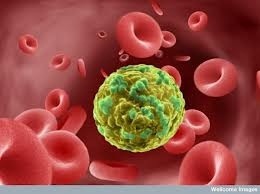 Everyone with colorectal cancer is aware of CEA, short for Carcinoembryonic Antigen and watches their levels very closely. However, not many seem to know what CEA actually is, what it does and why its important. Here is my take on CEA:
Everyone with colorectal cancer is aware of CEA, short for Carcinoembryonic Antigen and watches their levels very closely. However, not many seem to know what CEA actually is, what it does and why its important. Here is my take on CEA:
CEA is the oldest known marker for colorectal cancer (identified in 1965). It is expressed in about 90% of colorectal cancers. It is currently the most common marker used to monitor colorectal cancer and disease progression. Increasing CEA levels are typical signs of progressing disease and the formation of metastases.
CEA is typically expressed during embryonic development, and stops after the fetus is formed. CEA is a glycoprotein belonging to the immunoglobulin supergene family.
Despite a lot of research, not very much is know about the biological function of CEA. What is known, is:
a) CEA protects cells from apoptosis. High levels of CEA have been correlated to poor function of the 5fu chemo agent. It also protects cancer cells from UV-light and Á- Interferon.
b) CEA overexpression can protect tumor cells from anoikis. Anoikis is basically apoptosis induced by loss of cell contact with the extracellular matrix. It can thus protect circulating tumour cells and help them metastize.
c) Experimental and clinical studies show that CEA is involved in the development of liver metastasis from colorectal cancer.
d) CEA is metabolised by the liver. Patients with extensive liver mets and damaged livers are likely to show higher CEA levels.
e) CEA is a GPI-anchored glycoprotein. It is located on the cell surface but also released into the extracellular space from cancer cells.
f) Well differentiated tumours express more CEA. This could be one of the reasons why not all colorectal cancers express CEA.
g) Other non cancer related causes of elevated CEA include: inflammatory bowel disease, peptic ulcers, pancreatitis, biliary disease, liver dysfunction and hypothyroidism.
CEA expressing colon cancer cells are likely to have a growth advantage because of CEA’s antiapoptotic function.
The normal level of CEA is less than 2.5 ng/ml, but can be elevated in smokers. A level of less than 5.0 is considered normal for smokers. Dying Cancer cells can release CEA and this can result in false readings, especially after treatments such as chemotherapy that may cause extensive cell death.
High CEA levels prior to surgery indicate a poor clinical outcome for patients.
More research needs to be done. The identification of the receptor for CEA that mediates its pro-metastatic activities is crucial and would have a great impact on cancer therapy.
Resources
Surface Expression and CEA Binding of hnRNP M4 Protein in HT29 Colon Cancer Cells
Carcinoembryonic antigen
